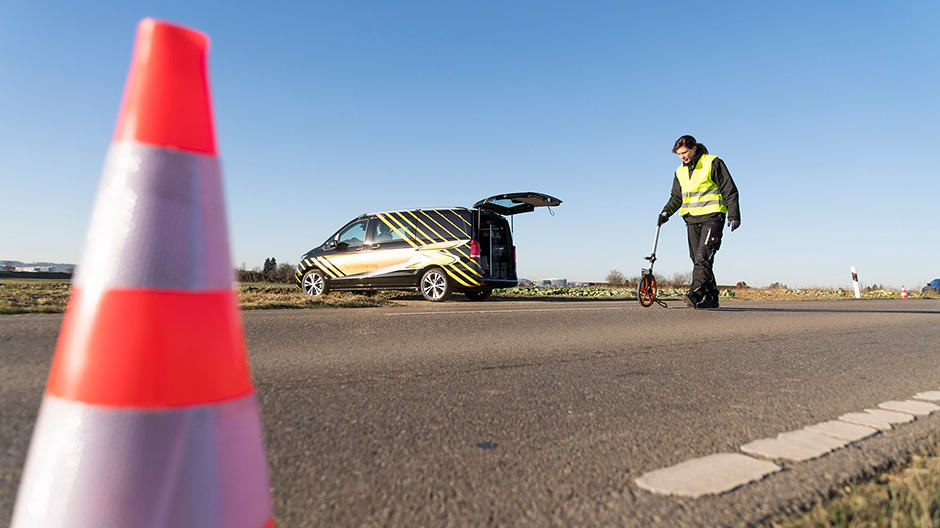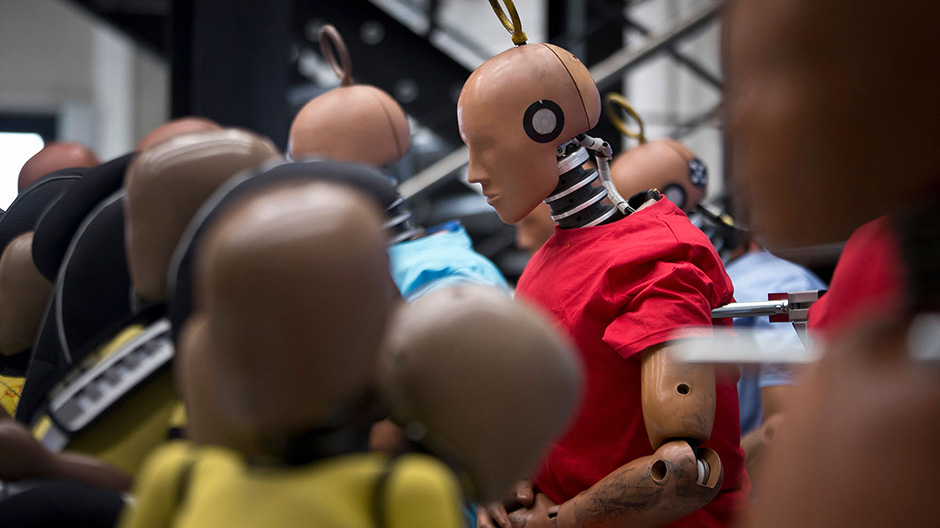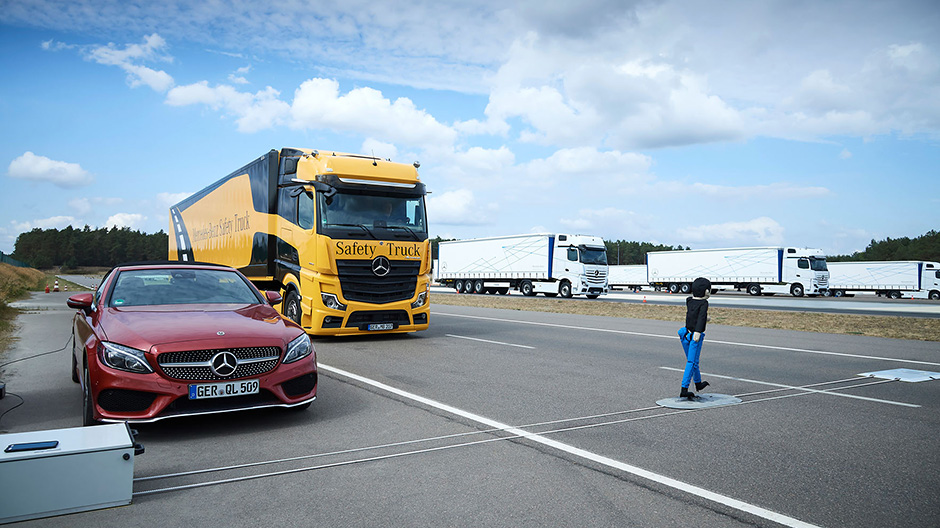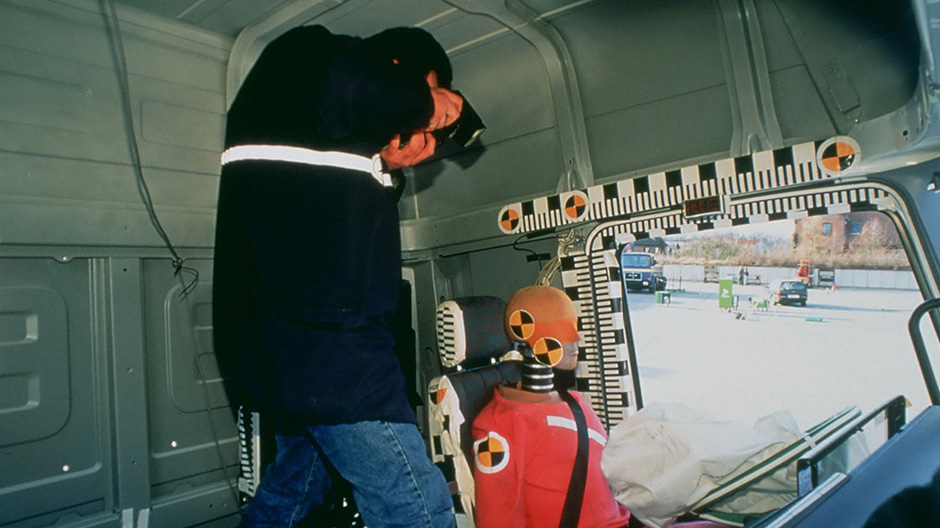
Crashes ensure increased safety: Accident Research by Mercedes-Benz
Vehicle & Technology
Looking very precisely so that all those on the move stay safe: Accident Research at Mercedes‑Benz Trucks.

The commercial vehicle accident researchers at Mercedes-Benz carry out extremely precise examinations – and have been doing so for almost 50 years.
Accidents should not happen in the first place – that is the uppermost priority for Mercedes‑Benz Trucks. But what exactly causes certain traffic situations to be dangerous, and how can drivers be better supported? The Accident Research department at Mercedes‑Benz has been investigating this since 1972.
Every single piece of information counts.
The specialists examine real accidents again and again and try to determine exactly what led to the events that caused the accident and the damage. The intensive interaction with the police and accident investigators helps. And very importantly: does the accident fit into some kind of a pattern? Do, for example, the same circumstances when overtaking lead to an accident again and again? And is there a way to improve safety for everybody?
When the accident researchers started their work almost 50 years ago, everything was about passive safety. In other words, the stability of the cab. But already in 1981, Mercedes‑Benz was the first manufacturer worldwide to equip its trucks with the ABS anti-lock braking system – the start signal for active safety and the beginning of a long development story leading to present-day innovations such as Active Brake Assist 5.



Analysis comes before development.
Evaluating accidents in detail is extremely important in order to set about creating systems such as Sideguard Assist, which has been available for Mercedes‑Benz Trucks ex-works since 2016. Exactly the same applies for Active Drive Assist and MirrorCam in the new Actros.
Crash tests are a further component. A classic example: the impact against a platform vehicle mock-up. Thus researchers can reconstruct a typical rear-end collision of one truck onto another.
On a computer – but still real.
In future, experts will additionally reconstruct accidents on a computer. In this way, they can vary crashes and accidents freely on the screen – this leads to more-precise results. Here, they pay particularly close attention to the circumstances that led to the accident.
Integral safety is the goal.
Accident research, crash tests and computer simulation are currently the three columns of vehicle safety development. On this basis, Mercedes‑Benz is putting into effect its concept of “integral safety”, which protects drivers in four phases: while they are driving, where there is danger, in the case of an accident and after a collision.
How efficiently this concept contributes to road safety can be seen from the accident figures. According to the Federal Statistical Office, the number of fatalities in truck accidents in Germany fell by around 60 per cent between 1992 and 2018. The number of those seriously injured went down by about 45 per cent – despite a great increase in transportation.
Photos: Daimler




Comment
Please log in to post a comment.
7 comments
Felicitaciones RoadStars
Felicitaciones RoadStars
Leider kein Vidio aber sonst natürlich ein Top Fahrzeug schon verrückt was heute alles möglich ist ( Allerdings schon bei mir im Pkw schalte ich mannschmal vieles aus weil es nicht immer funktioniert b.z.w wer braucht eine vollbremsung wo kein Hinderniss ist 😁🙈😔
Gruss Andreas
Leider kein Vidio aber sonst natürlich ein Top Fahrzeug schon verrückt was heute alles möglich ist ( Allerdings schon bei mir im Pkw schalte ich mannschmal vieles aus weil es nicht immer funktioniert b.z.w wer braucht eine vollbremsung wo kein Hinderniss ist 😁🙈😔
Gruss Andreas
Grüße Jörg 👍👍👍👍⛟😎
Grüße Jörg 👍👍👍👍⛟😎